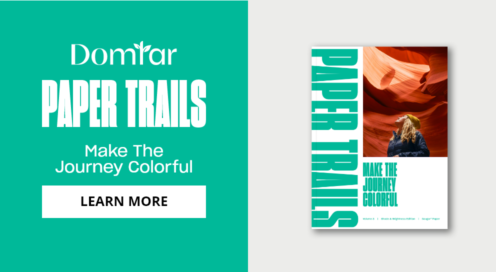Graphic Design Professionals Discuss Ownership of Rejected Designs
Written by Cai Sepulis RGD, Evelyn Csiszar RGD, Collective Experience Inc., Gil Martinez RGD, Newcom Media Inc., Elana Rudick RGD, Design Is Yummy, Matthew Clark RGD, Subplot Design Inc., Chelsey Stuart-Duval RGD, ChelseySD&
When working with clients, do you clarify the ownership of rejected designs? In this instalment of Business Perspectives, we asked graphic design professionals to explain their approach to rejected designs and who owns what.
How do you handle the copyright for rejected designs with your clients? Do you always provide them as part of your contract? Do you provide them with options to receive them for additional fees?
Cai Sepulis RGD, Partner at Toque Ltd. and Freelance Illustrator: I recall when I was first starting my career and had my first instance of a client using a rejected concept. I had done some concepts for a simple mailer campaign; one concept was picked and pushed to completion without much of a hassle, it was a good project. A couple months later, I saw a terrible attempt by the business owner to create one of the rejected concepts on their own without me. Granted this was over 15 years ago and neither the client nor I knew any better at the time. It definitely was an eye-opener and now all of my contracts specifically state, "All concepts and works-in-progress are property of the designer/illustrator."
In my experience, the clients who want all the process work tend to be upfront about it and understand that it comes with extra fees. For small business, I think it’s rare to be asked for this kind of stuff. It’s more common with my illustration work when I freelance with large agencies; as I’m working with their national clients, signing an NDA before I’m even briefed is common and sometimes they want all the process work (not all the time) which I think just has to do with ensuring I don’t take those concepts elsewhere, or perhaps so the agency can use them or develop them again with me. In general, I would say it has been more so the case where a client wants to develop one chosen concept then decides a few weeks down to go back and chose another rejectedconcept instead. But even in that case, they have understood that we’re backtracking on the process which incurs more fees
Overall, I would always be hesitant to give up process work or rejected designs; I love going through old sketchbooks and finding little nuggets of ideas that maybe weren't perfect for that client but were decent enough to dig out and explore again for another client.
Evelyn Csiszar RGD, Director of UX Design & Strategy, Founder at Collective Experience Inc.: In my contract, I state that the client will only own rights to the final design that is chosen. Very rarely do I have clients who ask for the rights to everything, and often the client doesn't want to pay extra for additional concepts, so they stick with their final concept only. The copyright and ownership ofany additional designs, that are presented during the process but are not chosen, remain mine and I'm free to use them however I like, as long as the usage of these designs does not utilize the client's branding or breach the client's rights or confidentiality. I can't recall a time when I have actually reused any old designs for another client, but legally, I have the option if I wish to do so. I also offer an option for the client to purchase additional designs at an extra cost if they wish to do so.
My contract is worded like this: "The Client agrees that the Design Firm owns the copyright to all ofthe concepts created before the Client selects the final design(s) and that the Client will only own rights to the final Deliverables upon the Design Firm’s receipt of the full Fee payment from the Client." I don't put specifics about buying the rights to the additional concepts in the contract. In the rare occasion that this comes up, the Client typically inquires about it and if they wish to purchase the additional rights, we negotiate a price.
Gil Martinez RGD, Art Director at Newcom Media Inc. and Head Honco at Big Guy Studio: I do not provide copyright to drafts and sketches—only to the final design. All other work remains my property to use as I choose. Clients are paying for a service and a final set of assets, not the entirety of my creative output. I don't reuse concepts made for one client with another. Sometimes I do present rejected and revised concepts a second time when I believe they are outstanding options. I only do this with long-term clients at their request or when I am explaining why I think something should be considered again. I work with four basic contracts that give the client some flexibility depending on needs and budget, and that can be revised to include process work if the client needs it:
1. Client buys all rights to the work, including modification rights
2. Client buys all rights to the work, with no modification rights
3. Client buys specific rights to the work, including modification rights
4. Client buys specific rights to the work, with no modification rights
Elana Rudick RGD, Founder & Creative Director at Design Is Yummy: In our contract we stipulate that we retain rights to the rejected designs. It's not that common clients request ownership to all, especially concepts not selected. We do work with some governmental bodies, however, that unfortunately do not allow us to retain rights to any work, even unused concepts, once provided to them. In a small number of cases, clients have asked for approval prior to us sharing materials related to them/their organization whether that be rejected or selected artwork. If a client wants to use more than one concept, we usually charge a nominal fee to cover our time to prepare the other set(s) of final artwork. The work has already been done as part of the previous scope of work and we certainly aren't trying to gouge a client who's expressing they like what we've done.
Matthew Clark RGD, Founder & Creative Director at Subplot Design Inc.: Our stand on rejecteddesigns is very firm: we own them. If we show a client 5 ideas, they pick 1 and the other 4 belong to us to use in the future as we see fit. On a few occasions, we have sold a rejected idea created for one client to a new client. We also could consider selling the ideas to the same client at a later date (ie. for a future campaign or packaging range). But that's never happened in our history.
Our Client Agreement Terms & Conditions lays it out very plainly: "The Designer is the first owner ofall work or materials created during the course of this project. Copyright and other intellectual property rights, and all drawings, mockups, models, artwork, specifications, computer disks, electronic files, software documents and all other tangible materials, including preliminary concepts, accepted or rejected elements, works in progress, finished materials and in the final specific designs which have been created or furnished by the Designer during the course of this project shall remain the exclusive property of the Designer unless otherwise specifically assigned in writing."
And even blunter: "Rejected designs shall remain the exclusive property of the Designer." We even go one step further in our contract. Not only can our clients not use rejected designs, they cannot use our preliminary work: "In no circumstances may work in rough form be used or published by the Client as finished work or be used as a basis for completion by others, without the prior written consent of the Designer."
There have only been a very small number of clients who have ever questioned our stance on retaining ownership of rejected concepts. 99% totally get it and respect it. The only clients that have debated it with us are large, multi-national brands who not only ask for ownership of rejected concepts, but by their logic, anything we say in a meeting or suggest in an email, they own. They also typically ask for full moral rights to all our work, which is a whole other level of copyright that we don’t give up.
In the end, however, we have always managed to keep our rejected ideas ownership and moral rights intact in our final contracts, even with the big guys.
Chelsey Stuart-Duval RGD, Creative Lead & PR Coordinator & Social Media Director at ES Sports Inc.: I have it baked into any agreement that rejected designs and concepts remain my property. The client has rights to the final direction selected. If they want to take up another concept for a different product line, I’ll often offer to start a new project at a discounted rate to go forward with that concept. But it’s important to be discussed beforehand/in the contract. With most clients I also have the understanding that rejected concepts won’t be presented to their direct competitors (client conflicts is something I normally avoid but isn’t outside the realm of possibilities).

“With over 4,000 Members across Canada, the RGD is a place where professional designers share information, support and adhere to ethical best practices and advocate for a greater understanding of the value of design and effective processes for selecting and working with professional designers.”
Tags
Related Articles




Riane Ayoung Associate RGD, Brittany Russell, Kathy-Ann Scantlebury Associate RGD, Ashley Tomlinson Associate RGD, Donica Willis RGD










